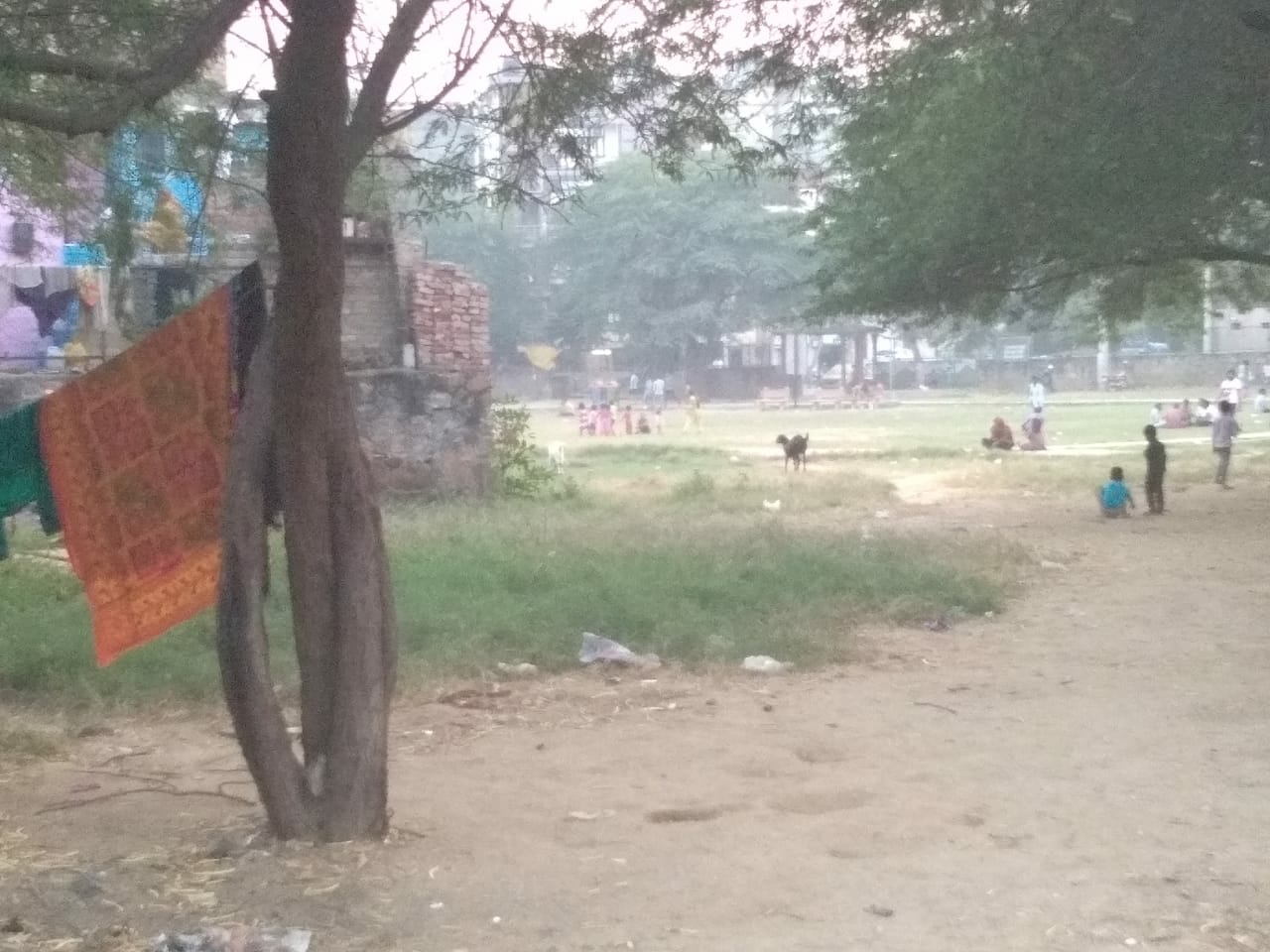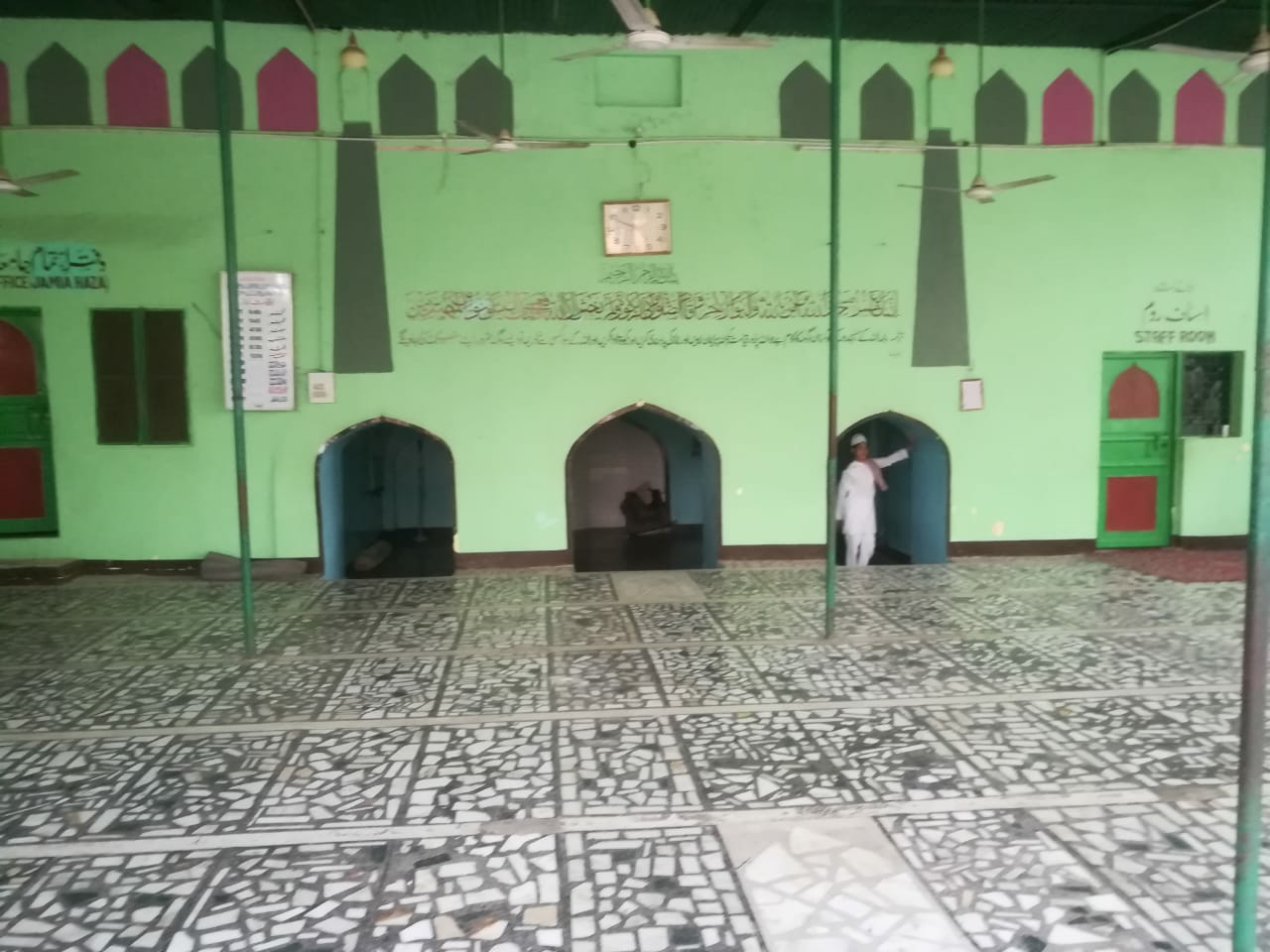An eight year old Madarsa student was killed in Delhi on October 25th, and his death has been variously narrated as a lynching, or as a scuffle between minor boys. Azram Rahman Khan traces a pre-history of hate that contributed towards this unfortunate incident.
The tragic death of Mohammad Azeem, an 8 year-old student in the Madarsa Jamia Faridia on 25th October gave rise to a set of conflicting narratives. One narrative was that Azeem was lynched to death and the other was that he died after a scuffle broke out between two groups of minor boys. After that this controversy has been settled to some level with several media platforms retracting their earlier report that used the word lynching. The reason that can be given for this, and rightly so, is majorly the CCTV footage. It is clear from the footage that the fight continued for just a few minutes (around 2 minutes in which the actual fight is for around 45 seconds or so), as opposed to the usual acts of lynching where the victim is beaten for a long time. From the reports that are so far available, Azeem did not have any external injuries. The ‘mob lynching’ cases that have been reported from last few years show a neat distinction between the religious identity of the victims and that of the perpetrators, however in this case that neat distinction is missing since some of the accused in the incident are themselves Muslims. Lastly, the boys that have been taken into custody are all minors as corroborated in the Newslaundry report and they lie in the age group of 12-13 years.
But can one trace a pre-history of hate that might have contributed towards this unfortunate incidence? That is what the author went to find at the site and its surroundings. The wall that separates the Valmiki camp and the Madarsa cum Masjid compound has been a reason of conflict from last many years. The wall is broken and the Madarsa authorities want it built. Residents of the Madarsa allege that the Madarsa compound is used by some residents of the Valmiki camp to consume liquor and gamble. Residents of the camp claim that the broken wall serves them a passage to the main Shivalik road, and they use the compound for parking their vehicles and for their children to play. The madarsa authorities don’t dispute this claim but assert that there are three roads that connect the camp area to the Begumpur road and Shivalik road and that there is no reason for them to use the path from inside the Madarsa compound to get to the main road. The other reason for them having objections is that there have been several incidents in the past when liquor bottles were thrown inside the Madarsa building, and other incidents aiming to create nuisance. Mumtaz, a teacher at the Madarsa showed the author a YouTube video that was uploaded two years ago in which Madarsa children are seen sweeping away empty liquor bottles from inside the Madarsa building:
Another sort of harassment of the Madarsa, as has been widely reported in the media, is faced by the children. Many children that the author spoke to had a similar set of narratives, varying in degree, stating that they were bullied and harassed by some residents of the neighbourhood when they passed through the lane. They were also bullied when they earlier used to go and play in the public ground behind the Madarsa and have stopped going there now. Two boys from the Valmiki camp, who study in the Government school at Malviya Nagar, also attested to the fact that boys from the Madarsa no longer play in the public ground behind the Madarsa.
The Madarsa authorities allege that all these incidents of harassment and intimidation targeting its residents are done so that they are forced to close down the Madarsa and the property, and especially the plot of land adjacent to the Madarsa building, so that it can be taken over by the neighbourhood residents. They claim that it is the property of the Waqf board and showed some documents to support their claim.
Typical of the city’s carefully hidden underbelly, the Begumpur locality of Malviya Nagar, where the Madarsa is situated houses the city’s poorest and most vulnerable. The JJ clusters, one of which is the Valmiki camp, houses mostly casual labourers, most of whom are Dalits. The other cluster of Jhuggis which is to the east of the Madarsa compound also houses migrant labourers mostly from Bihar and UP, who are also Dalits. Lack of space is clear as we walk through the cramped lanes in the vicinity of the Madarsa compound. As much as can be made out of the anti-Muslim under and overtones of the whole incident, it also looks like a struggle for resources that are scarce. The place is surrounded by what can be termed one of the posh regions of South Delhi. The interests of those who eye these regions as a prospect for real estate cannot be ignored. Especially when in Delhi, there is a history of working class areas being cleared for real estate builders. The latest being Kathputli colony in Shadipur region, where the nexus between the central and the state government in furthering the interests of builders was quite clear. The role of these interests, though unclear in our conversations in fomenting tensions between the residents, certainly has a wider basis.
If we try to locate the anti-Muslim element in targeting the Madarsa in the propaganda and social engineering by only the present regime and the mechanisms brought by it, it would be to negate the wider restructuring that has taken place over a much longer time. It would also ignore the narratives of the people, and the documents that were presented to substantiate those narratives. One such document that I saw was a letter of compromise between the Madarsa authorities and the residents living nearby signed by both the parties in the year 2000. There too gambling and consumption of liquor inside the Madarsa compound finds mention. It was decided then that there would be no such activity inside the Madarsa compound or otherwise the wall would be closed down. There is thus a need to situate the problem in a longer historical trajectory. We must consider how Muslim religious spaces and easily identifiable Muslim bodies with their obvious religious markers, are seen in the everydayness of life. There is also a need to look at how and why Anti-Muslim psyche actualises itself in spaces that are occupied by the urban poor and the marginalised.
The death of Azeem and the incidents that have happened prior to it reflect how the neighbourhood has structurally redefined itself. The Babri demolition was the creation of a huge spectacle of destroying a Muslim religious place. This spectacle has been recreated many times in post-Babri India through attacks on Mosques and Mazaars at smaller levels. The Babri episode changed the way Muslim religious spaces are seen, and today we see the aversion in everyday engagement of people towards these spaces and those who inhabit that space. It is seen mostly as outside the normal moral economy of the neighbourhood, because of its distinct appearance and as something that can be violated without much repercussion. The sense of impunity has certainly grown over the last few years with the coming into power of the present regime. Azeem’s death takes place in today’s India where the issue of the construction of Ram Mandir on the destroyed Babri Masjid has taken the center stage of the national politics once again, threatening to throw the entire country back into the fires of communal tensions and riots that were sparked two and a half decades ago by the political powers of those times.

The passage on the left was still used by people living in the jhuggis behind to commute, the passage in the middle (in the distance blocked by a temporary iron gate) that had been a source of conflict was blocked and guarded by the police. The passage on the right that lies outside the compound is the other way to go to the camp settlement. Photo: Pavani
Centrality of caste and communal relations in shaping this working class neighborhood is reflected in the way the residential places are organised with different castes or people coming from different regions mostly living in different pockets. Because of their non-engagement with the city’s larger social and political life as part of the larger urban working class of the city, they tend to express themselves in the politics of the neighbourhood. This is how Chandravarkar understood for instance the organization of working classes in Bombay before and in the aftermath of failure of the general strike of 1982. The politics of neighbourhood centering around caste and communal notions gives way for forces like the Shiv Sena in Bombay to create an ‘other,’ which although part of that neighbourhood does not share certain features through its appearance and the like. Soon there is a surge of petty criminalization and hostility vis-à-vis the ‘other’ that gets violent at times. The conflict between labour and the employer, which should have been at the forefront of the neighbourhood politics, gets replaced by such other contradictions. The predicament in Begumpur locality and especially the space in and around Madarsa Jamia Faridia follows this same old history. Here, there was no attack that would create a spectacle but it had a certain character of everydayness.
The absoluteness of the above narrative thankfully gets broken from the fact that Rajesh, a resident of the Valmiki camp, took Azeem in his lap to the Madarsa after he fell down and got unconscious, from where he was taken to taken to a hospital. Also, not the whole of the neighbourhood is hostile or that all forms of cohesion have ceased to exist. It was informed by both the Madarsa residents and those who live in the east end of compound that passage from inside the Madarsa has and is being used by those living in the Jhuggis without any problem to either. This was also evident from the time the author spent inside the Madarsa premise, where the passage was normally used. The children from the Jhuggis on east end of the compound also play with children from the Madarsa. The violence is also not unilinear. Kalpati Devi who stays in one of the Jhuggis and works in a factory told the author that petty crimes like snatching of money and other forms of nuisance are a regular feature of the locality. Other residents of the locality also pointed towards petty criminalization.
However, after the death of Azeem there is a looming threat that fissures based on communal lines might broaden further, leading to a flare up. To avert further crisis there is a need for constructive dialogue and to ensure that peace prevails in the area. There is also a need to build a neighbourhood culture that focuses more on similarities rather than on differences. Organisations and movements working on questions of labour and dignity of labour, must take up such initiatives. At the same time the civil society such as activists and journalists from outside must show utmost responsibility in understanding the issue. The imposition of easy and singular narratives not just ends up in misreading the situation, but also won’t lead us to any favourable political interventions either.
This article is based on the author’s interactions with the Muslim community in Malviya Nagar, the Madarsa authorities and neighborhood, and people in the public ground adjacent to the the Valmiki camp. One needs to also establish more comprehensive dialogues with the Valmiki community, once the current climate of fear and distrust and denial subsides, and document a more detailed account of the social realities in the area and their political manifestations.
Azram Rahman Khan is a Research Scholar in Delhi University.





I found the piece sensitive and insightful. Since I live in the neighbourhood, all I’d add to this is that the past 3,4 decades has seen huge changes in the urban space around, and the colonisation by upper middle classes,in the form of posh hospitals like Max and the many malls, has added to the distress in the older urban villages of Hauz Rani, Khirki, Begumpur etc. The periodic tensions and clashes are symptomatic of these shifting, visible, axes of class and privilege too, and maps on to communal/caste / and racial divides. The anti African attacks some years back was the result of these tensions. I’ll be happy to work with any group engaging these questions in this area.